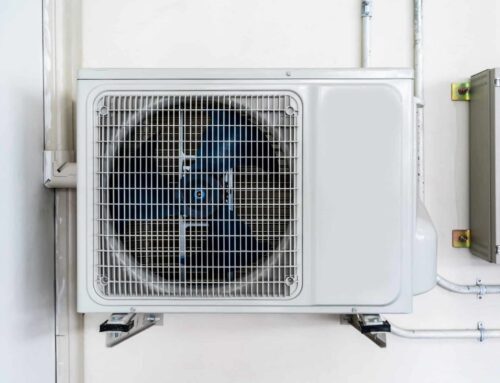Do you feel areas of your home getting colder as the weather begins to change, even though you’ve turned your furnace on and turned up the thermostat? If so, this might mean your home has inadequate insulation.
Insulation helps maintain comfortable temperatures in your home or office building. If you don’t have sufficient insulation, you may be paying much more for your heating or cooling bill than you should have to.
Luckily, this situation can be remedied by installing new insulation. What type is best, though? Let’s take a look at the difference between spray foam insulation and fiberglass insulation.
Spray Foam Insulation
There are two types of spray foam insulation: closed cell and open cell. Both are effective.
Closed cell spray foam completely blocks air flow from inside or outside of your home or office. This means you’ll have better control over the building’s internal temperature as well as your heating and cooling bills.
Closed cell spray foam also adds structural strength to the building. This is ideal for areas with potential for high winds or earthquakes. It’s also helpful when the home or building could use more support for upper levels.
Not only does spray foam block air, but it’s also resistant to moisture and mold.
Open cell spray foam is usually a less expensive option than closed cell, and can not only be used as insulation but also to help with sound reduction.
How it Works
Spray foam is made of a polymer. When applied, it expands to fill in space.
Closed cell foam hardens as it dries. This allows it to effectively block all air that tries to penetrate it.
Open cell foam stays soft and it absorbs air that tries to pass through it.
Fiberglass Insulation
Fiberglass insulation comes in thick sheets or rolls of fibrous material called batts. It’s a common material in many older homes throughout the United States. One reason for this is the low upfront cost.
You may save in cost but you pay for it in effectiveness. Fiberglass insulation does help to filter cold air out to some degree, but it has no true air seal. Air will still flow in and out of your house or business with this type of insulation.
Easy installation is another reason fiberglass is so popular. Homeowners can normally install this themselves. Though it’s smart to hire a professional to ensure proper installation, if necessary, you could do it yourself.
While this may sound like a major benefit, keep in mind that fiberglass batts can sag and deteriorate over time. This means you’re left with gaps that don’t provide any insulation at all.
How it Works
This type of insulation is made up of lots of tiny fibers of glass. This barrier of glass fibers stops some of the air that tries to flow through it, but it is nowhere near as effective as spray foam insulation.
Comparisons
Now that you know a bit about each type of insulation, here’s how they stack up against each other.
The Cost
When paying for fiberglass insulation you’ll pay by the square foot.
The cost of insulating a room or home with fiberglass will depend on how much space you want to cover and how much R-value you need to achieve.
Spray foam is paid for by board foot instead of by square foot. A board foot is a space that is one inch thick and one foot wide and long. For example,1,000 square feet area covered with 3” of closed cell spray foam is equivalent to 3,000 board feet.
One board foot of closed cell spray foam can cost you double to triple the price of a square foot of fiberglass insulation. But keep in mind that you get much better insulation and air sealing with spray foam.
Length of Life
Fiberglass insulation can last several years, but during that time it loses its effectiveness and you never have a complete seal against air flow. The level of effectiveness will depend on if any moisture is present, too. You may need to replace this type of insulation or add to it as it settles and deteriorates over time.
Spray foam, on the other hand, can last as long as 80 years or more. It’s a much more permanent and effective option. While you’ll pay more up front, the longevity and efficiency of spray foam make it a very cost-effective option.
Sound and Allergy Considerations
If you’re looking for insulation that also blocks sound, fiberglass isn’t the best option. While it will block some sound, open-cell spray foam blocks a lot more of it.
Spray foam helps to block pollen and dust too, which is great for people with allergies.
Fire Hazards
Fiberglass insulation is flammable in certain situations. Spray foam can be too. With spray foam, you’ll often need an intumescent paint to be applied over it to provide a 15-minute thermal barrier.
Insulation needs?
Making smart decisions about your home can have a big effect on your utility bills and your comfort. Start the process by scheduling a free Energy Consultation with Superior Insulation Services a division of Superior Improvements Group.





